Family : Anarhichadidae

Text © Giuseppe Mazza

English translation by Mario Beltramini
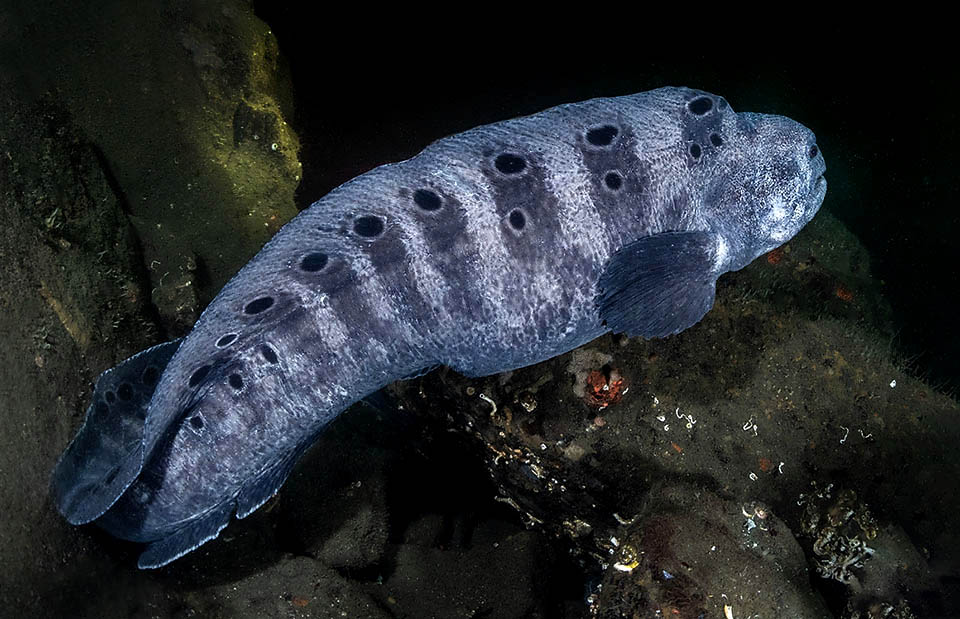
Majestic specimen of Wolf eel (Anarrhichthys ocellatus) that however, as we can see from the showy pectoral fins and the gill slit, has nothing. to do with eels © Melissa Foo
With its two metres of length, the Wolf eel (Anarrhichthys ocellatus Ayres, 1855) is the biggest member of the order of the Blenniiformes.
It belongs to the family of the Anarhichadidae that counts only 5 species: Anarhichas denticulatus, Anarhichas lupus, Anarhichas minor, Anarhichas orientalis. and Anarrhichthys ocellatus. Fish still inserted by some, like in the past, among the Perciformes with the status of suborder.
The genus Anarrhichthys, created by Ayres in 1855, is composed by the reference to the genus Anarhichas and to the Greek term “ichthys”, fish. That is, it would be a fish “similar to an Anarhichas, which it actually resembles, except for the elongated body. Conversely, the specific term ocellatus highlights, in Latin, the presence of several ocelli, fake eyes present on fins and body.
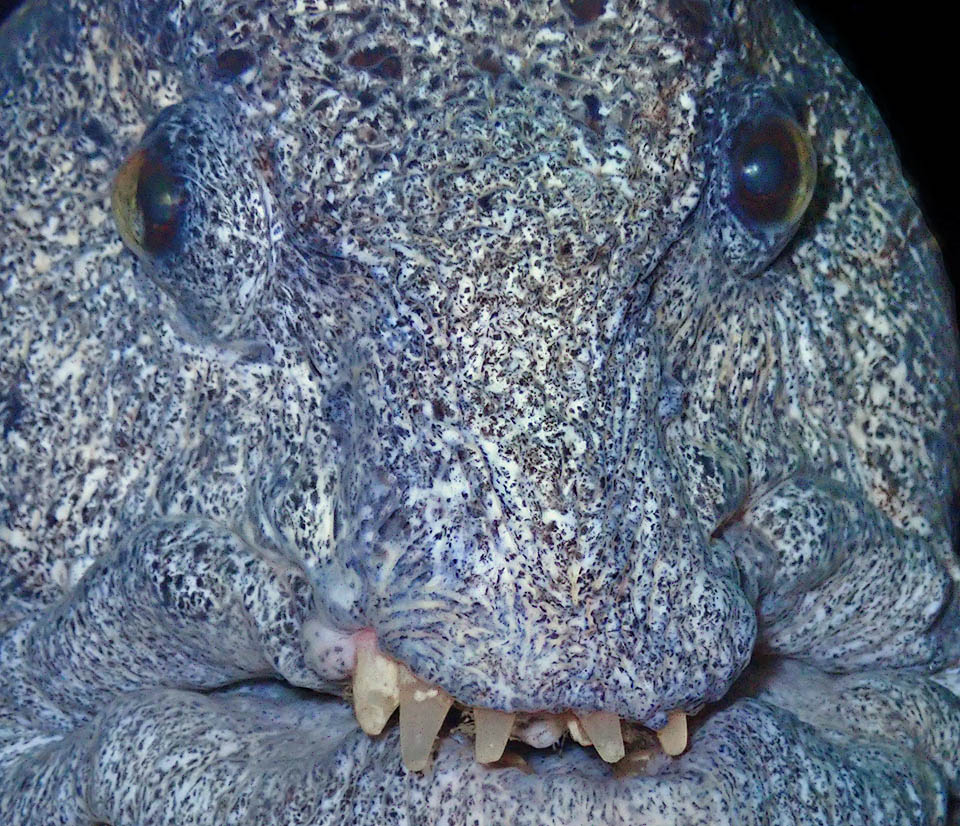
Lives at temperatures between 1,2 and 10,5 °C in North Pacific: from Okhotsk Sea to California. Here the terrifying smile of a male with solid canines © K3
Zoogeography
Anarrhichthys ocellatus is present in the North Pacific Ocean from the Sea of Okhotsk and Japan to the Krenitzin Islands, and reaches, southwards, the coasts of California.
The Wolf eel is a demersal species present between 1 and 226 m of depth in decidedly cold waters, with temperature between 1,2 and 10,5 °C, so much so that for other Anarhichadidae, their blood contains a sort of antifreeze for maintaining its fluidity.
The larvae and the less than two years juveniles are pelagic. The adults, when they find a zone rich in prey with a safe haven among the rocks, become sedentary and territorial.
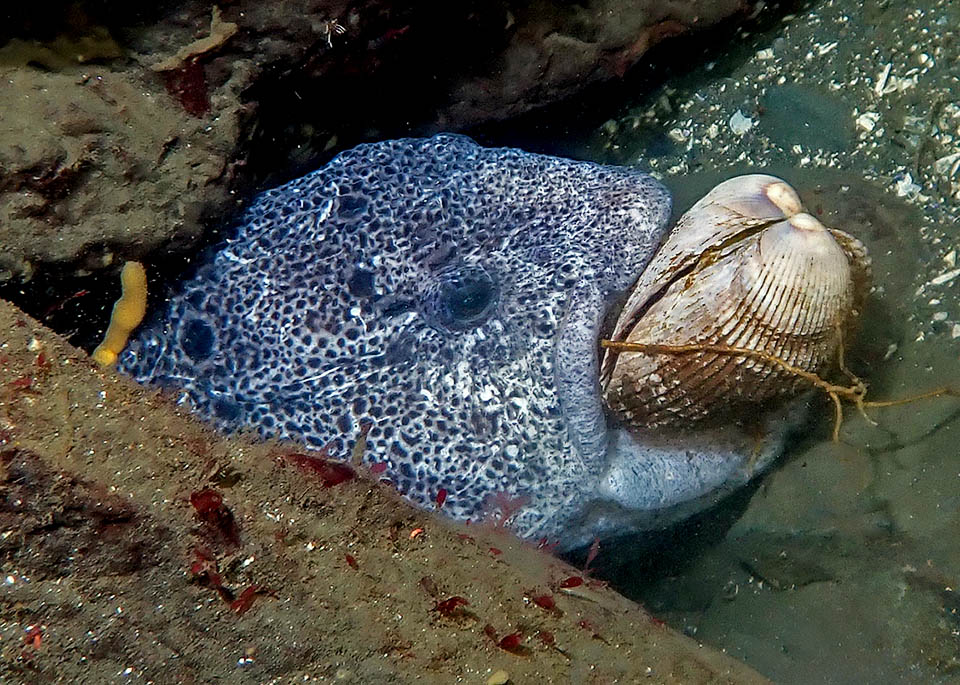
Actually, though being a traumatic species for importunate divers, they mainly serve to crush the mollusks shells that are the main course of the adults © Sara Thiebaud
Morphophysiology
Anarrhichthys ocellatus can attain the length of 240 m with a maximum published weight of 18,4 kg.
The body, stocky and massive, higher in the males, displays large lips and strong jaws with solid canines in front and molars behind. They serve to seize fish but mainly for crushing the shells of the molluscs, the carapace of the crustaceans and the dermoskeleton of the sea urchins.
The long dorsal fin, that goes from head to tail, does not present soft rays but is supported by 228-250 flexible fishbones. Conversely, the anal counts 200 soft rays.
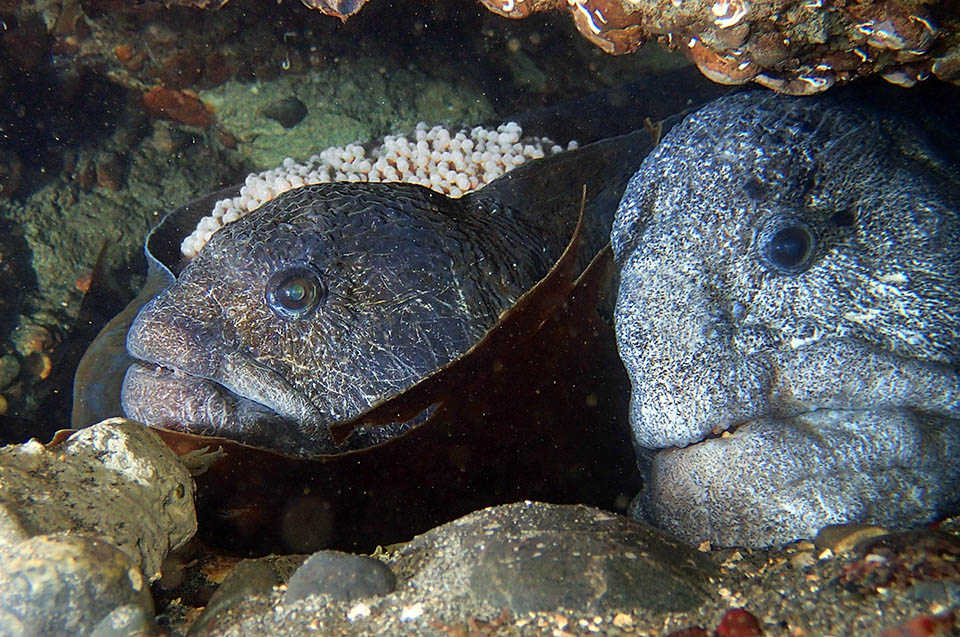
Couple in the cave. The female, left, protects the eggs with its long body. Cared by both parents, they hatch after about four months © Sara Thiebaud
The big paired pectoral fins have 20 rays, and their presence clearly shows, despite the vulgar name, that these fish taxonomically don’t have anything in common with eels and porays, where they are small or absent, not to talk about the gill openings. The pelvic fins and the lateral line are absent and the caudal is small.
The livery changes markedly with age. Remaining unchanged the presence of ocelli, the juvenile phases are in fact rich in red orange hues, that then turn slate blue with dark vertical bands, more evident in the older specimens.
Ethology-Reproductive Biology
Anarrhichthys ocellatus is a monogamous species that mates for life sharing the same cave.
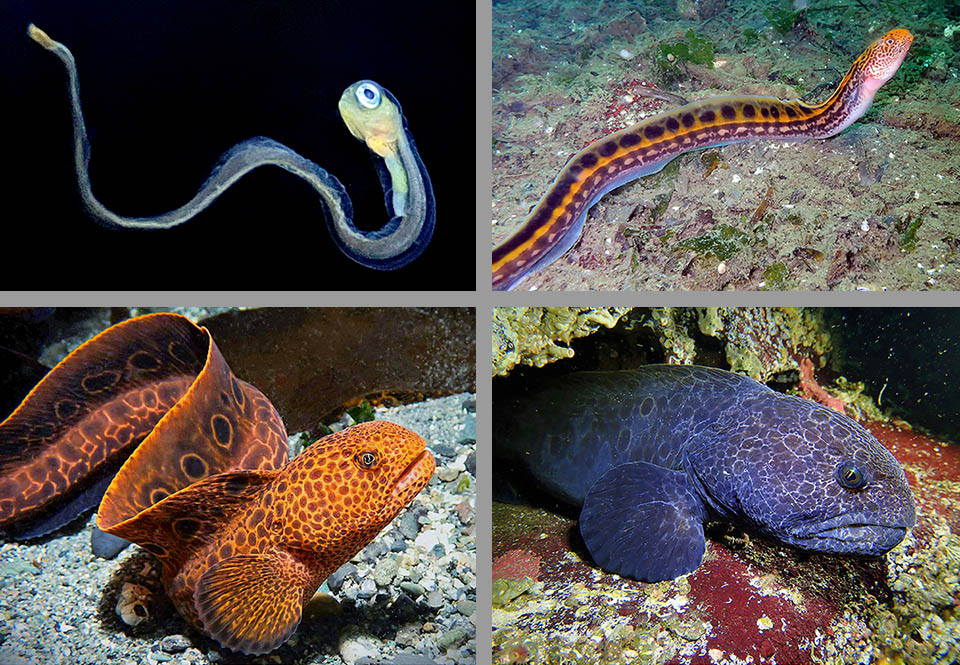
A larva, top left, and three growth stages. In the order: © Karen L. Johnson – © Gregory C Jensen – © Katherine Panfilova – © Mariah
It is a calm and curious fish like Anarhichas lupus that lets himself be approached by the divers but is much less tolerant than the latter and when threatened attacks fiercely.
It reaches sexual maturity at around 4 years of age and the reproduction usually takes place between October and February.
While mating the male embraces the female with its long body fertilizing the eggs when they emerge. THese, about 6 mm wide, form, stuck together, a sort of a ball and are rotated, oxygenated by the parents and protected by turns between the coils for about 4 months.
The resilience of the species is good, with a minimum doubling time of the populations of 4,5-4 years and the fishing vulnerability, very high, marks, after the experts of FishBase, 90 on a scale of 100.
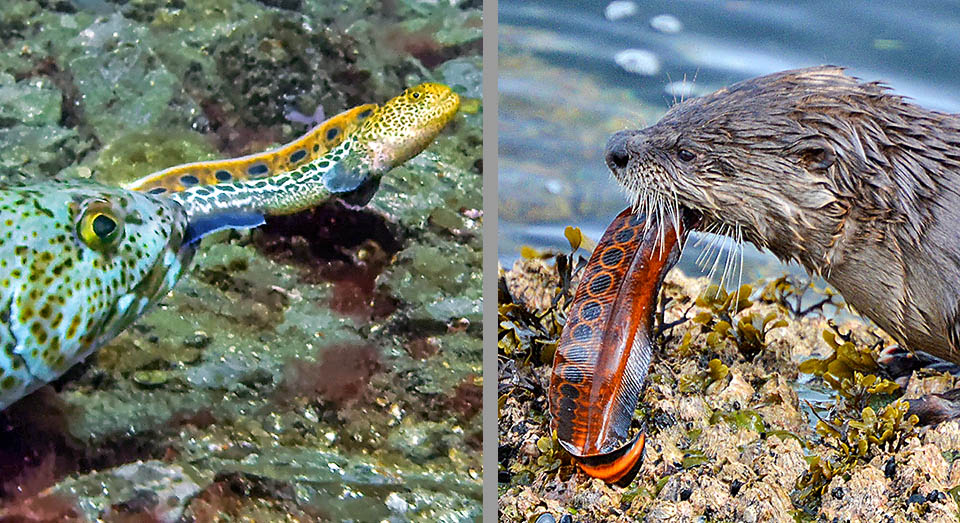
Anarrhichthys ocellatus adults are preyed upon by sharks, and juveniles by big fish like cods and marine mammals like otters © J. Driver (left) and © robertweeden (right)
In fact, the tasty flesh of Anarrhichthys ocellatus is very much prized, so much that some coastal tribes of north-west American natives, the Wolf eel is by them called the sacred “doctor fish” and only the tribal heales could eat it to increase their healing power and in Canada aquaculture projects are underway.
In nature it could live 20 years, but is often attacked by sharks, and when young, by cods and marine mammals like the otters.
However, considering its vast range, the fertility of females with batches of 10.000 eggs and the fact that it lives mostly hidden among the rocks with little chance of inadvertent fishing, from 2020 Anarrhichthys ocellatus appears as “LC, Least Concern” in the IUCN Red List of the endangered species.
Synonyms
Anarhichas ocellatus (Ayres, 1855); Anarrhichas felis Girard, 1854; Anarrhichthys felis Girard, 1858.
→ For general information about FISH please click here.
→ For general information about BONY FISH please click here
→ For general information about CARTILAGINOUS FISH please click here.
→ To appreciate the BIODIVERSITY of BONY FISH please click here.
→ To appreciate the BIODIVERSITY of CARTILAGINOUS FISH please click here.
